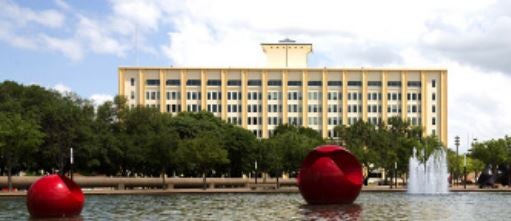Historic buildings or energy efficiency? Texas gets both, with innovative financing.
 When it comes to the history and DNA of a city, new buildings have nothing on century-old ones. Yet the reverse can be said in regard to water and energy efficiency. Older buildings reflect the culture and history of a community, but typically are highly inefficient.
When it comes to the history and DNA of a city, new buildings have nothing on century-old ones. Yet the reverse can be said in regard to water and energy efficiency. Older buildings reflect the culture and history of a community, but typically are highly inefficient.
Such was the case with the Butler Brothers Building in Dallas, a previously-abandoned 1910 structure that was often referred to as an eyesore. So when the real estate developer Alterra International decided to turn the building into a mixed-use complex with apartments, hotel rooms, and retail space, a lot of work was needed to improve its water and energy efficiency – work that required up-front capital investments.
Through the Texas PACE Authority’s “PACE in a Box” model, Alterra International was able to secure $23.9 million in PACE financing for upgrades that will slash carbon pollution, cutting energy use by about 40 percent and annual water use by almost 700,000 gallons.
Property Assessed Clean Energy (PACE) is a financing model that helps local governments and the private sector back energy efficiency and renewable energy upgrades for homes and businesses. Texas is the only state that includes water in its PACE programs and could serve as a model for other water-strapped states.
PACE in Texas
Fortunately for the Butler Brothers project, Dallas is one of the many local communities that has embraced Texas’ PACE program. According to the Texas PACE Authority, PACE is:
“An innovative financing program – completely free of government mandates and public funding – that enables non-profit, commercial, industrial, multi-family, and agricultural property owners to obtain up to 100 percent of the project financing from low-cost, long-term loans for water conservation, energy efficiency, and onsite generation projects.”
[Tweet “Historic buildings or energy efficiency? Texas gets both, with innovative financing.”]
Enacted in June 2013 with bipartisan support, PACE has gained steam in Texas in recent years: Many cities and counties, including the City of Dallas, City of Houston, and El Paso County, have authorized use of the clean energy finance tool. Most recently, the City of Amarillo approved Texas’ 15th PACE program – the first in the panhandle region.
As a result, exciting projects are getting off the ground to lower energy and water waste. For example, last year three Simon Property Group malls secured over $3 million in PACE financing for energy and water-saving retrofits. And Austin’s Congregation Beth Israel was able to use PACE to alleviate its skyrocketing energy bills by improving its insulation.
Texas’ largest PACE project
The nearly $24 million in financing for Dallas’ Butler Brothers Building covered improvements to HVAC, lighting, insulation, roofing, glazing, exterior waterproofing and plaster, plumbing fixtures, and irrigation systems, making it the largest PACE project in the Lone Star State. Furthermore,
“This project will contribute to the creation of over 100 jobs in the Dallas area, reduce annual electricity use by more than 6.6 million kilowatt hours, remove over 3.500 metric tons of CO2e each year, and save almost 700,000 gallons of water per year.”
An open-market approach, Texas’ PACE program is already shaping up to be a model for other states and communities around the country. Hopefully the Dallas project will show that, through the use of this innovative finance tool, century-old buildings across the state can have both history and efficiency.
Photo source: Alterra International











